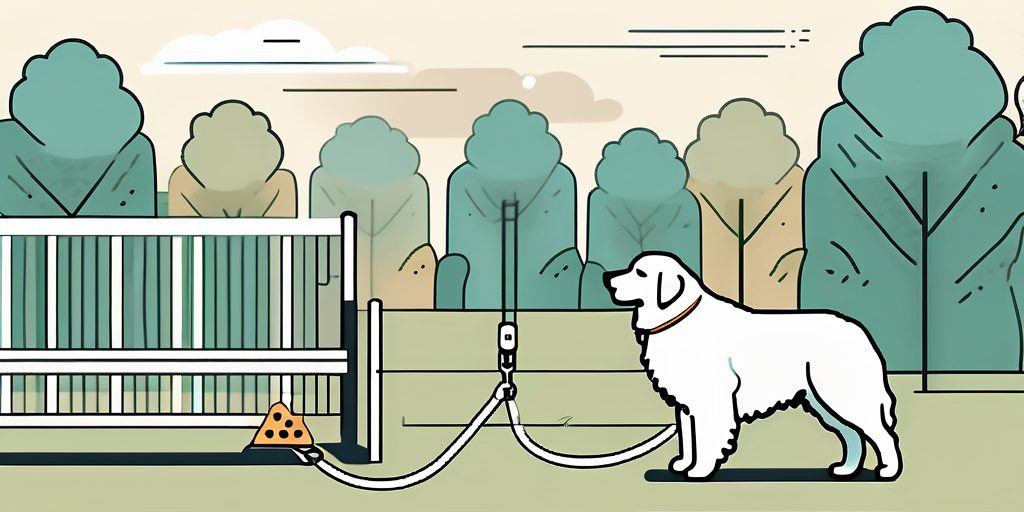Training a Great Pyrenees, a majestic and intelligent breed, requires a unique approach. Known for their independence and protective nature, these dogs can be a joy to train with the right techniques. This guide will provide you with comprehensive insights and practical steps to effectively train your Great Pyrenees.
Understanding the Great Pyrenees
Before diving into the training techniques, it’s crucial to understand the nature and characteristics of the Great Pyrenees. This breed, originally bred for guarding livestock, is known for its independent thinking and protective instincts. They are gentle giants, often reserved but also affectionate towards their families.

Training a Great Pyrenees can be challenging due to their independent nature. They are not as eager to please as some other breeds, which means traditional training methods may not always work. However, with patience, consistency, and understanding, you can successfully train your Great Pyrenees.
Characteristics of the Great Pyrenees
-
Size: Great Pyrenees are large dogs, with males standing 27-32 inches tall at the shoulder and females 25-29 inches. They typically weigh between 85 and 100 pounds.
-
Temperament: They are known for their calm and patient demeanor. Despite their size, they are gentle and very good with children and other pets.
-
Intelligence: Great Pyrenees are intelligent and independent thinkers. They were bred to make decisions on their own while guarding flocks, which is why they may not always follow commands immediately.
-
Protectiveness: They are naturally protective and can be wary of strangers. Early socialization is important to prevent them from becoming overly protective.
Training Your Great Pyrenees
Training a Great Pyrenees requires a combination of patience, consistency, and positive reinforcement. It’s important to start training early, ideally when they are puppies, and to be consistent with your commands and expectations.
Remember, Great Pyrenees are independent thinkers. They may not respond to commands immediately, but that doesn’t mean they aren’t learning. Be patient and persistent, and your efforts will pay off.
Steps to Train a Great Pyrenees
-
Start Early: Begin training as soon as you bring your Great Pyrenees home. Puppies are more receptive to learning new things.
-
Use Positive Reinforcement: Reward your dog for good behavior. This can be in the form of treats, praise, or playtime. Avoid punishment as it can lead to fear and aggression.
-
Be Consistent: Use the same commands and gestures each time. This will help your dog understand what you expect from them.
-
Socialize Your Dog: Introduce your Great Pyrenees to different people, animals, and environments. This will help them become more comfortable around strangers and reduce their protective instincts.
-
Train Daily: Make training a part of your daily routine. Even a few minutes each day can make a big difference.
Common Training Challenges and Solutions
While training a Great Pyrenees, you may encounter some challenges. Understanding these challenges and knowing how to address them can make the training process smoother and more effective.

Remember, every dog is unique, and what works for one may not work for another. It’s important to be patient and flexible in your training approach.
Barking
Great Pyrenees are known for their frequent barking, a trait that comes from their history as livestock guardians. They bark to alert their owners of potential threats. While this can be a beneficial trait, it can also become a nuisance if not properly managed.
To manage barking, try to understand the cause. If your dog is barking at a specific trigger, such as a passing car or a stranger, try to distract them with a toy or a command. Consistently rewarding quiet behavior can also help reduce excessive barking.
Stubbornness
Great Pyrenees are independent thinkers, which can sometimes come across as stubbornness. They may not respond immediately to commands, or they may choose to ignore them altogether.
To overcome this, make training sessions fun and engaging. Use positive reinforcement to reward your dog for following commands. If your dog is not responding to a certain command, try a different approach or take a break and come back to it later.
Conclusion
Training a Great Pyrenees can be a rewarding experience. Despite their independent nature and potential training challenges, these dogs are intelligent, loyal, and affectionate. With patience, consistency, and a positive approach, you can successfully train your Great Pyrenees and enjoy a strong, loving bond with your furry friend.
Remember, every dog is unique, and what works for one may not work for another. Be patient, be consistent, and most importantly, enjoy the journey of training your Great Pyrenees.
Join the BreedRead Community
Ready to deepen your understanding and enhance your Great Pyrenees’ training journey? Subscribe to our free newsletter at BreedRead.com for a wealth of knowledge tailored to your dog’s breed. Discover expert training tips, health care strategies, and nutritional advice that will help you and your majestic companion enjoy a healthier, happier life together. Don’t miss out on our comprehensive guides and in-depth insights – all available at your fingertips. Join the BreedRead family today!

